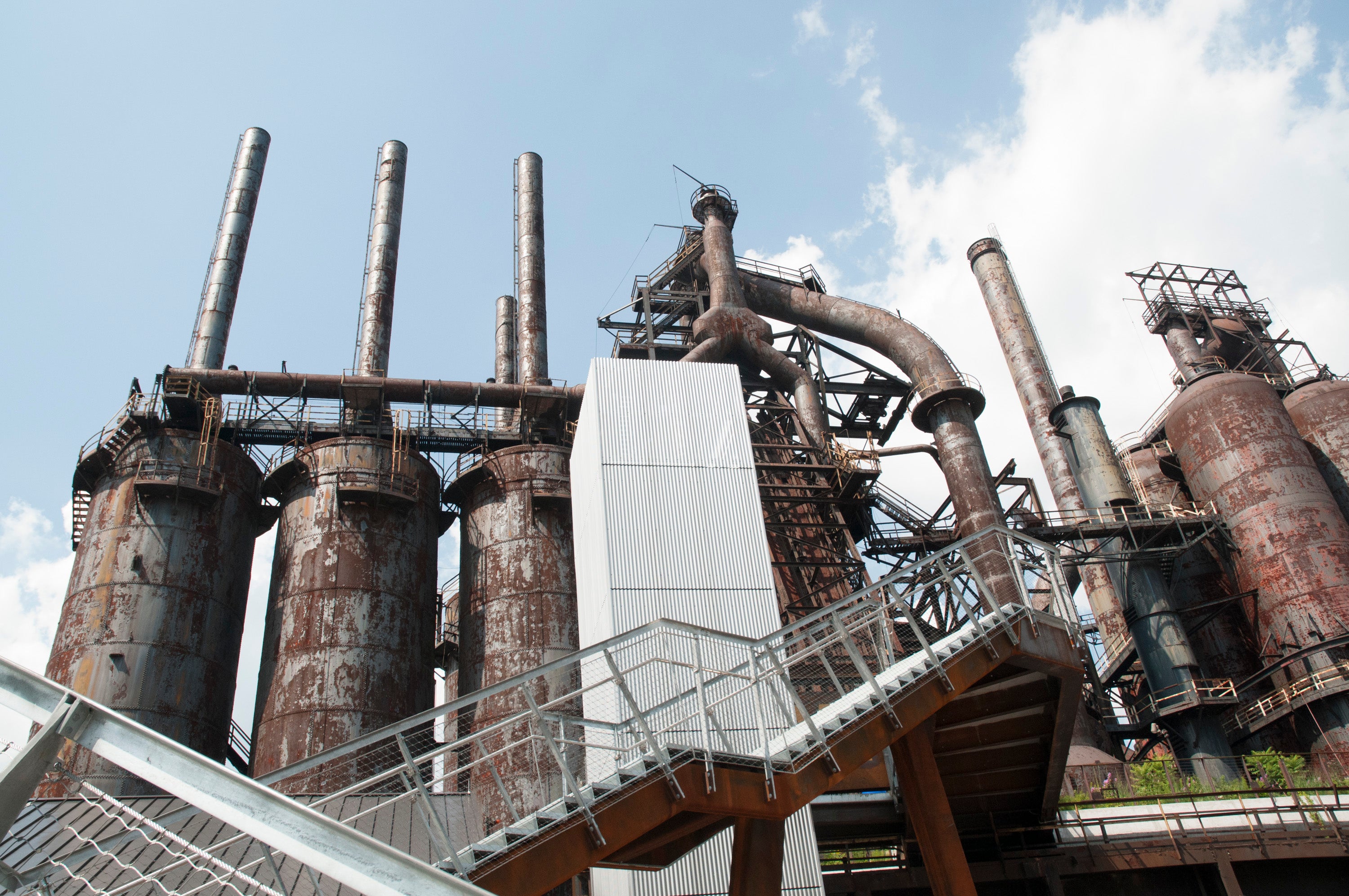How Bethlehem played industrial redevelopment’s waiting game
Listen
When industry dies, its defunct facilities are a liability: maintain, modify, demolish — the options are pricey and complex for cash-strapped former host communities committed to honoring the legacies, however painful, these relics represent.
The experience is well known throughout the Rust Belt, including the city of Bethlehem. But the outcome there is less common.
Experts point out there was a 20-year lag between Bethlehem Steel shutting down its plant and headquarters, and the recognition of the beginnings of a revival there.
And that delay might have driven the success.
Legacy remains
Thousands of city residents had worked — and hundreds had died — making the beams buttressing iconic skyscrapers like the Chrysler Building, and bridges like the Golden Gate, for more than a century. Then in 1995, Bethlehem Steel shuttered its flagship plant. The home of the nation’s largest shipbuilder was, suddenly, its largest brownfields site.
Two decades later, much of the property’s been redeveloped. It’s SteelStacks arts campus has earned international accolades for its performance spaces, a public television station, art galleries and an outdoor industrial history museum, of sorts.
Its main exhibit? Blast furnaces. From the other side of the Lehigh River, they look like a rusted pipes towering 23 stories over the water and railroad tracks.
Sands Las Vegas Corporation and its partners agreed to preserve the blast furnaces during the process of getting their gaming license for the casino now up and running about a mile east of SteelStacks. There’s not much to the agreement, though, at least the one provided by the city in response to a Right-to-Know request. It’s a letter signed by real estate investor Barry Gosin and prolific Lehigh Valley developer Michael Perrucci, neither of whom responded to interview requests. Sands President Mark Juliano also didn’t return calls seeking details on maintenance and stabilization.
But some experts say there’s not much more to expect, really, from a preservation standpoint. That’s partly because of the expense that would be entailed in dismantling the structures and remediating pollution left behind, says Columbia University real estate professor M. Leanne Lachman.
On waiting
The furnaces are imposing, intriguing, and available for close, public inspection from an elevated walkway every day. By night, they’re illuminated into a polychromatic backdrop for outdoor concerts.
Lachman notes their value’s increased – upping protection – by their incorporation into the site design in a way that highlights and augments their historic significance .
“They’re almost like man-made mountains” says architect Antonio Fiol-Silva. “They’re almost a feature in the landscape.”
Fiol-Silva’s firm designed the walkway, and the music pavilion. He’s also worked on other Rust Belt redevelopment projects: multiple in Philadelphia and the Susquehanna Commerce Center in York.
“In other cities, structures that were very similar to the ones in Bethlehem were torn down because there was no way, at that time, of … being able to reuse them,” Fiol-Silva says.
Lachman goes deeper. She says there’s a healing process relatively universal among post-industrial cities.
“It takes 20 years to cleanse an area. And that’s really what happened here,” Lachman says.
When the town factory folds, people often are too angry to think about legacy or preservation right away, Lachman says.
And sometimes 20 years isn’t enough, says Preservation Pennsylvania Executive Director Mindy Crawford. Even half a century didn’t quite do it for residents of Pittsburgh’s Hill District, who celebrated the demolition of the Civic Arena in 2011, more than 50 years after its construction divided their neighborhood and displaced thousands of people.
“It has more to do with what happens to the site,” Crawford says. “If it sits vacant and becomes an eyesore, it’s easier to be angry, … but buildings that quickly go from one use to another are often embraced by the public. “
Fiol-Silva says disinvestment can breed desperation — but that didn’t happen in Bethlehem.
Toward the end of that two-decade cleansing period Lachmann spoke about, gambling had arrived in Pennsylvania courtesy of the legislature’s passing a bill in 2004. The Las Vegas Sands Corporation wanted in. Its casino’s now not only up and running a mile east of SteelStacks, it’s the state’s strongest-performing.
That sounds like luck. Or, at the very least, the oh-so-critical, often elusive financing vehicle coming through in a major way.
Fiol-Siva says it was even more than that.
“What was really unique about Bethlehem Steel is, even as that company was facing its own demise, they actually paid for creating a master plan for the reuse of that site,” Fiol-Silva says.
The company didn’t do that in Johnstown or Steelton.
But Steel execs lived in Bethlehem, or near it. Residents also voiced reservations about the casino, even with its promise of at least $10 million per year for the local government to invest in public safety, roads, or technology. This created leverage.
Lachman, who led the jury that picked the site for the Urban Land Institute’s Global Excellence Award, admits things really fell into place for Bethlehem.
But she says the honor is “intended to recognize projects that have replicability. Other communities have historical projects that could be celebrated in the same way.”
And Lachman quickly recalls that the 20-year stretch – which she says she’s observed elsewhere, too – during which the community healed and its leaders planned.
Bethlehem officials visited successfully-redeveloped industrial sites, most notably in their sister city in Germany.
They also lobbied for a federal Brownfields designation and admission into multiple state-level tax break programs in and around the property. Similar incentives sparked development of The Waterfront, a massive Western Pennsylvania shopping mall built on the site of the former Homestead Steel Works — while maintaining a row of smokestacks behind its parking lot — within 13 years of the plant closing. But like SteelStacks, there’s not a walkable connection to the rest of the community or the riverfront. Bethlehem Redevelopment Authority Executive Director Tony Hanna says there are plans to improve on that, as do Homestead officials.
So, memo to other cities seeking a more prosperous future without losing their legacy: pride, planning, patience, persistence, providence — all required, as a start.
WHYY is your source for fact-based, in-depth journalism and information. As a nonprofit organization, we rely on financial support from readers like you. Please give today.



